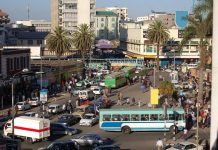Taxes paid on used motor vehicles look set to drop significantly in the coming months after the High Court in Mombasa declared the current tax computation formula used by the Kenya Revenue Authority (KRA) illegal.
The taxman has been using price quotations from dealers of new vehicles such as Toyota Kenya as the basis for calculating import duties and other levies on second-hand cars shipped in from overseas markets.
Used car dealers argued in court that the starting quotations, known as current retail selling prices (CRSP), are inflated and therefore result in unfairly higher taxes running into millions of shillings for those dealing in used imports.
They also say the process is unconstitutional since it locks them out, meaning that there is no public participation.
In a case filed by Car Importers Association of Kenya, the judge ruled in favour of the petitioners and found KRA’s taxation of used cars to be unfair and arbitrary.
Justice Eric Ogola last Wednesday declared that the CRSP is unconstitutional and ordered KRA to consult used car dealers when creating the next price list.
Justice Eric Ogola last Wednesday declared that the CRSP is unconstitutional and ordered KRA to consult used car dealers when creating the next price list.
“A declaration that for purpose of continuity and in the interest of the public the transactions already effected via the said CRSP … shall continue to apply until such a time as the respondents will establish a new CRSP value in accordance with the law within 12 months from the date of this judgment,” he ruled.
Dealers in second-hand vehicles argue that the prices supplied by the new vehicle sellers to KRA are sometimes higher than actual showroom prices.
It is expected that by forcing public participation in the setting of the CRSP, the process will become more transparent and lead to lower taxes on models that have been unfairly overcharged in recent times.
“Taxes on some models have been unfairly high. We have been telling KRA that their sources of CRSP are interested parties who inflate the prices,” said Charles Munyori, the secretary-general of Kenya Auto Bazaar Association.
The current CRSP lists hundreds of vehicle models including Toyota Prado LJ running on a three-litre diesel engine whose showroom price is stated at Sh9.7 million. Others are Mercedes C200 Elegance with a 1.79-litre petrol engine (Sh7.3 million) and Toyota Vanguard 4WD with a two-litre petrol engine (Sh5.2 million).
The court case highlighted the arbitrary nature of the current tax system, which has seen some importers abandon their vehicles at the port after being hit with higher levies than they expected.
Al-Husnain Motors, for instance, imported a Toyota Land Cruiser V8 running on a 4.6-litre petrol engine. The used car dealer paid taxes of Sh4.1 million derived on the retail price of Sh14.4 million for a similar model in Kenya.
KRA, however, demanded more taxes from the dealer, arguing that the car should be taxed based on the higher selling price of Sh17.9 million for a Toyota Land Cruiser VX.
Taxman unfair
The judge found that the taxman was unfairly shifting goalposts to collect higher taxes, including by claiming that the car had been modified and gathering questionable data to justify its position.
“This court is satisfied that the respondents have no legal mandate to extract more taxes from Al-Husnain Motors on the basis of Facebook website data, or data offered in unclear circumstances by Toyota Kenya who are the petitioner’s competitors.
“Clearly, the basis of such taxation is guesswork whose result is ambiguity which has led to some importers being left off the hook while others being forced to pay.”
The judge added that the current motor vehicle tax process, if allowed to continue, will promote bias, unfairness and discrimination in assessment of tax due.
Used car dealers have long accused their formal counterparts of supplying the taxman with exorbitant prices of the models they sell, with KRA using this information as a base for calculating import duties.
The second-hand dealers estimate the losses brought by this price divergence at hundreds of thousands to millions of shillings for each imported car.
The dealers see this as a bid by their formal counterparts to drive up prices of used models and render them uncompetitive in the eyes of their price-sensitive customers.
New vehicle dealers on the other hand have argued that the variance in the prices is due to the fact that the CRSP reflects a snapshot of their operations.
They say the benchmark prices are static and don’t capture changes in showroom prices over the course of the year as a result of factors like exchange rates and competition, leading to the variance.
Used cars generally attract an import duty of 25 percent, excise duty of 20 percent and valued added tax of 16 percent, payable cumulatively and in that order.
The value of a car is calculated based on the CRSP for that specific model, adjusted for depreciation at a rate of 10 percent per year. Insurance and freight charges are added to the adjusted CRSP to arrive at the customs value.
Imports of used cars are capped at eight years from the date of manufacture.
A higher reference price, therefore, has the effect of inflating taxes and the ultimate yard prices of second-hand cars. Formal dealers, however, lay the blame on the taxman, saying the current method of arriving at the benchmark prices is also hurting them.
“I’m not surprised that the CRSP may be different from showroom prices,” Dennis Awori, Toyota Kenya’s chairman, told the Business Daily in a past interview.
“KRA asks for pricing information at a certain time and does not update it for months. In the interim period, prices change due to factors such as foreign exchange rates,” he said.
Mr Awori added that the CRSP for some models are lower by up to a third compared to auction prices in source markets like Japan, adding that this has given an undue advantage to used car dealers.
He said the taxman should rely on the overseas auction prices to arrive at the custom value of the used imports, arguing that this would ensure greater fairness for the two car market segments.
SOURCE: businessdailyafrica.com








![Top 20 Used Cars to Avoid Buying in Kenya – [PHOTOS]](../../../blog/wp-content/uploads/2013/11/top-used-unreliable-cars-to-avoid2-80x60.jpg)

![Top 20 Used Cars to Avoid Buying in Kenya – [PHOTOS]](../../../blog/wp-content/uploads/2013/11/top-used-unreliable-cars-to-avoid2-100x70.jpg)





